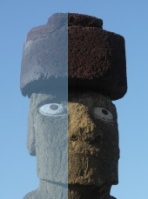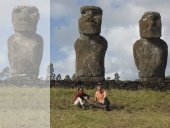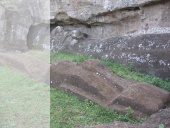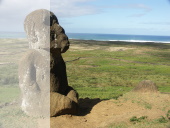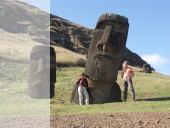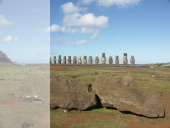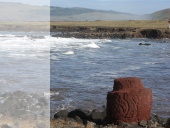|
Easter sunday in the year 1722 the dutch Admiral Jacob Roggeveen sighted the island of Rapa Nui and named
it according to the holiday Easter Island.
Roggeveen observed the island and saw that the islanders lit big fires in front of gigantic stone statues
and prayed to them on their knees.
In the year 1862 slave traders kidnapped 1000 islanders and forced them to work in
Peru. A year later 900 islanders were dead and when returning home the survivors spreaded pox, leprosy
and syphilis on the island. In 1888, Chile had just annexed the island, there were only 200 islanders left
vegetated on the island.
There are only speculations about the origin of the islanders:
While ethnologists believe in a colonisation from Polynesia, the norwegian Thor Heyerdahl is of the
opinion, that the first
islanders came from Bolivia after the destruction of the Tiahuanaco empire. They not only brought
potatoes to the islands, which still grow near the crater lake of Rano Raraku and near the lake
Titikaka, they also brought their art of stone cutting.
| 


